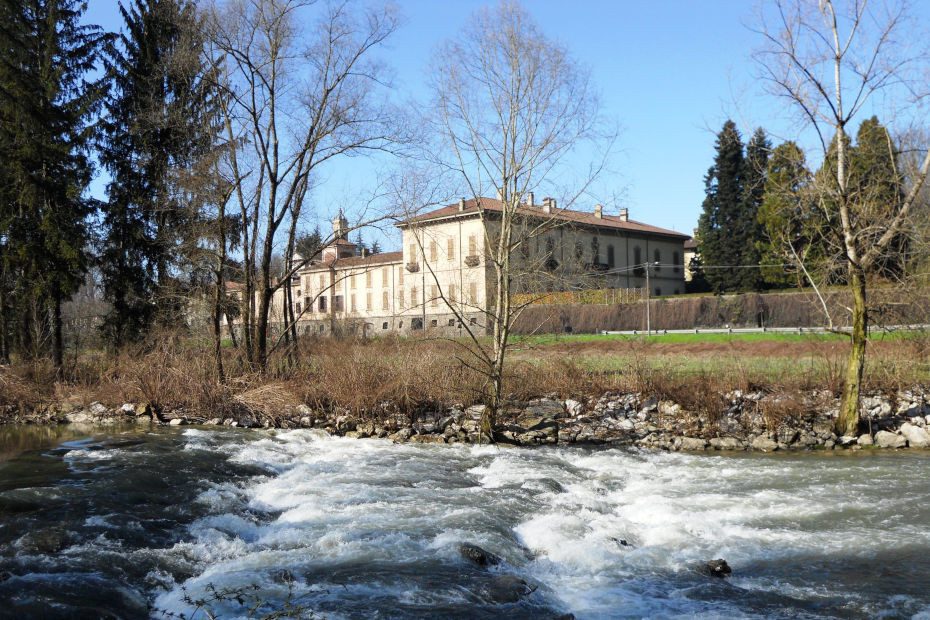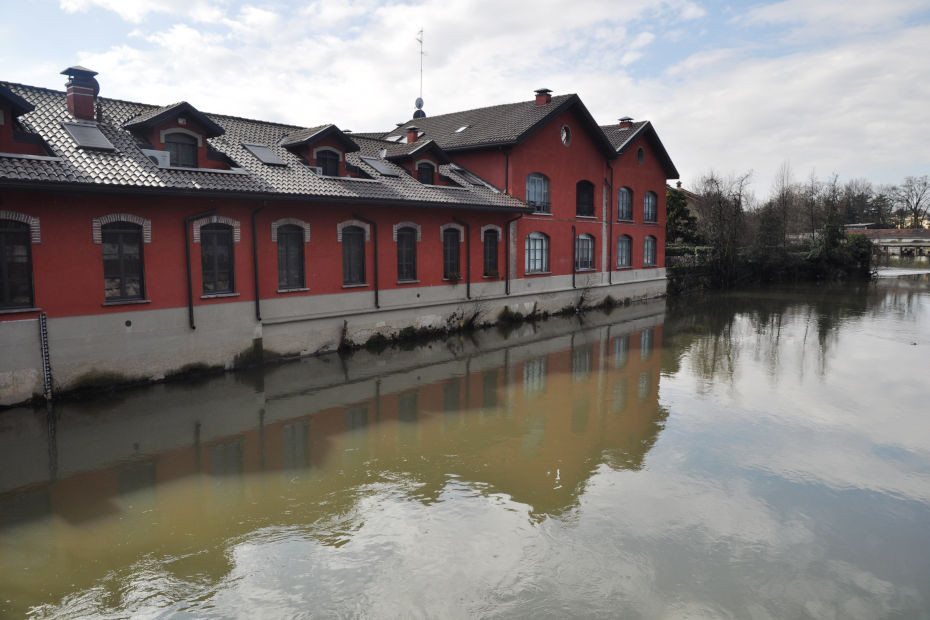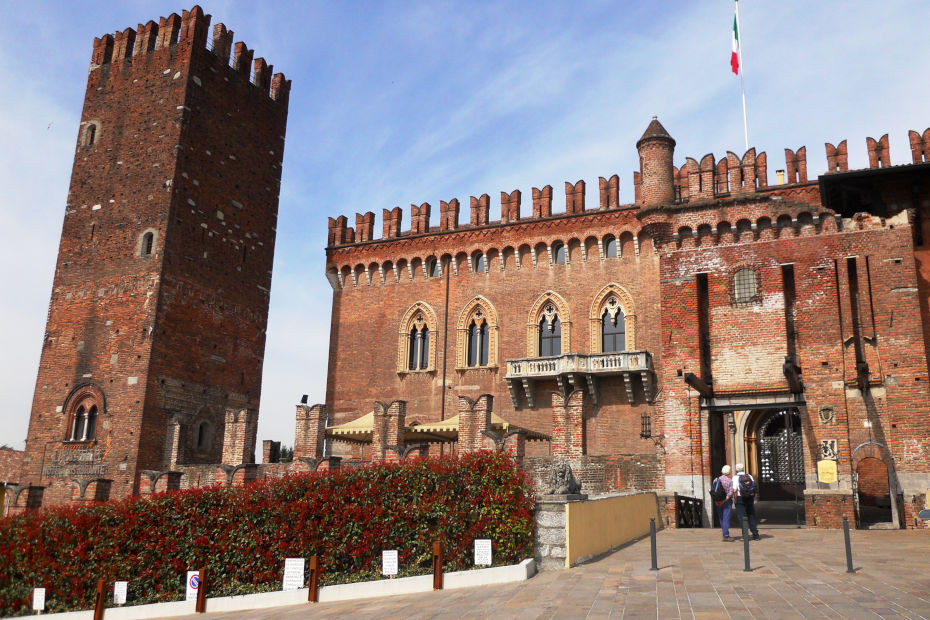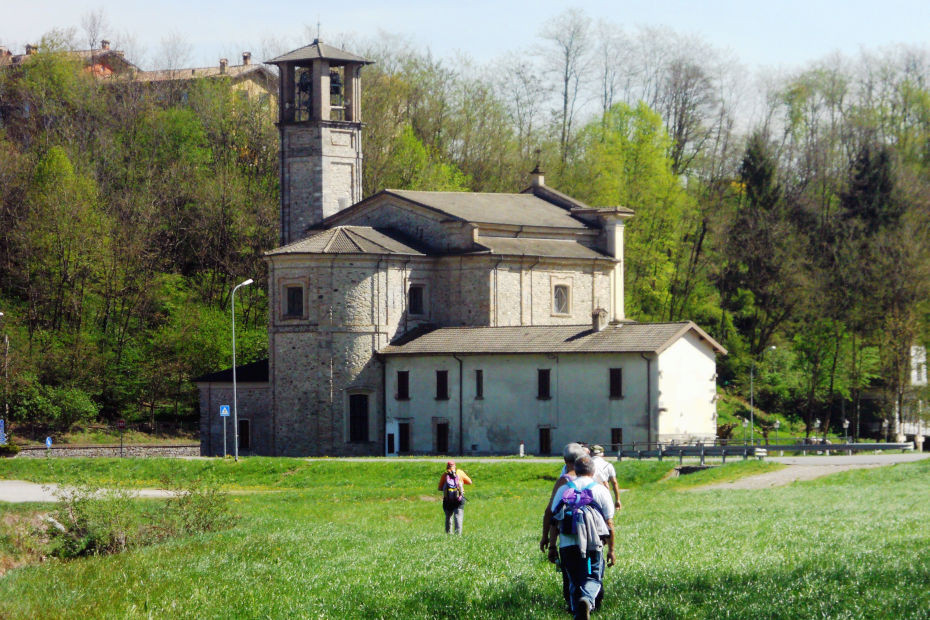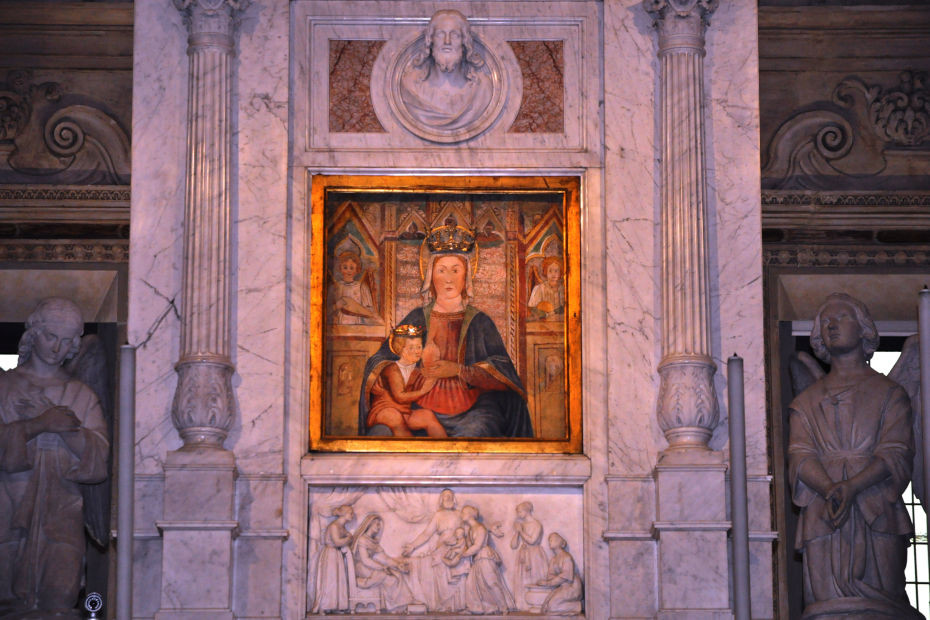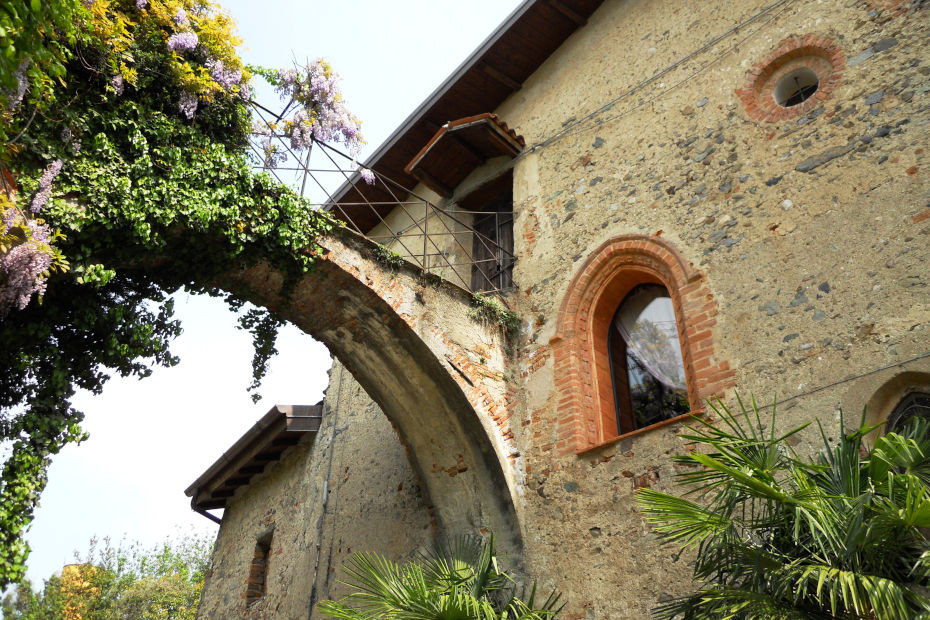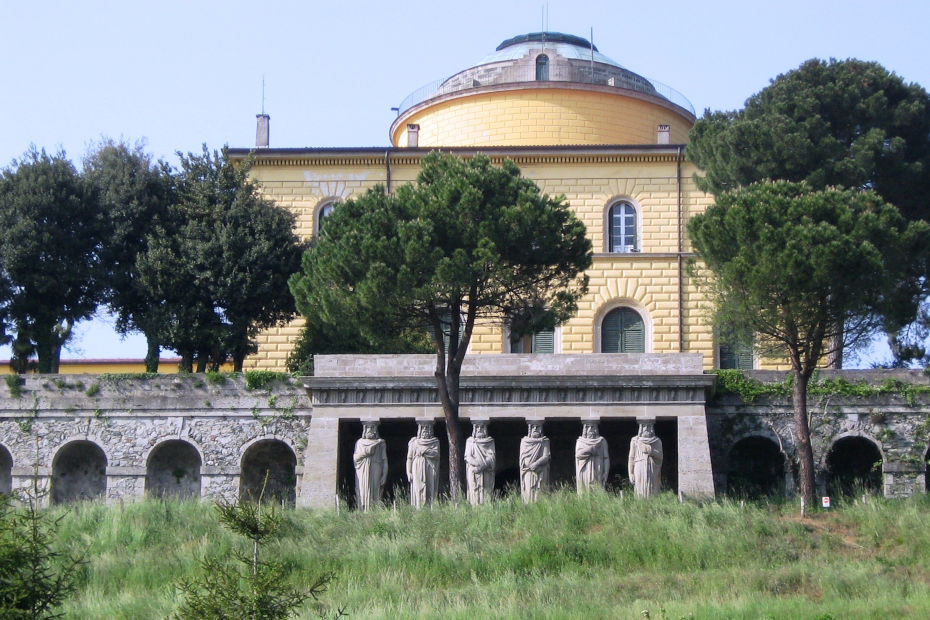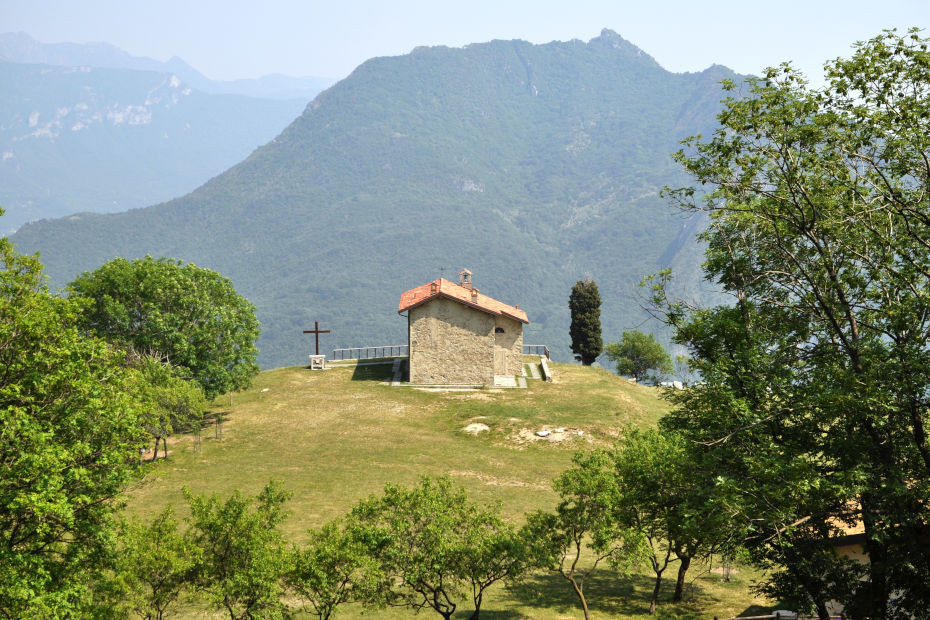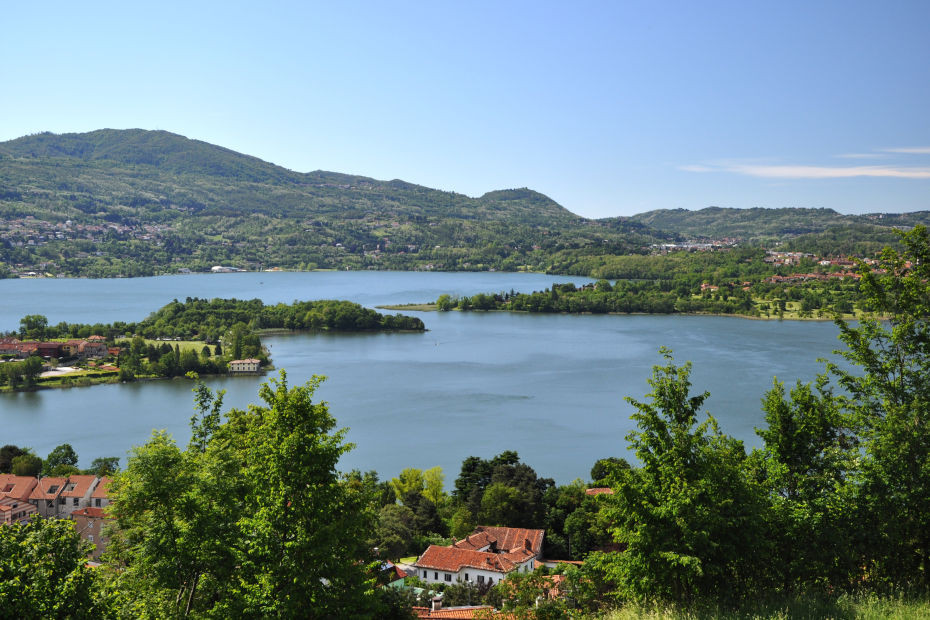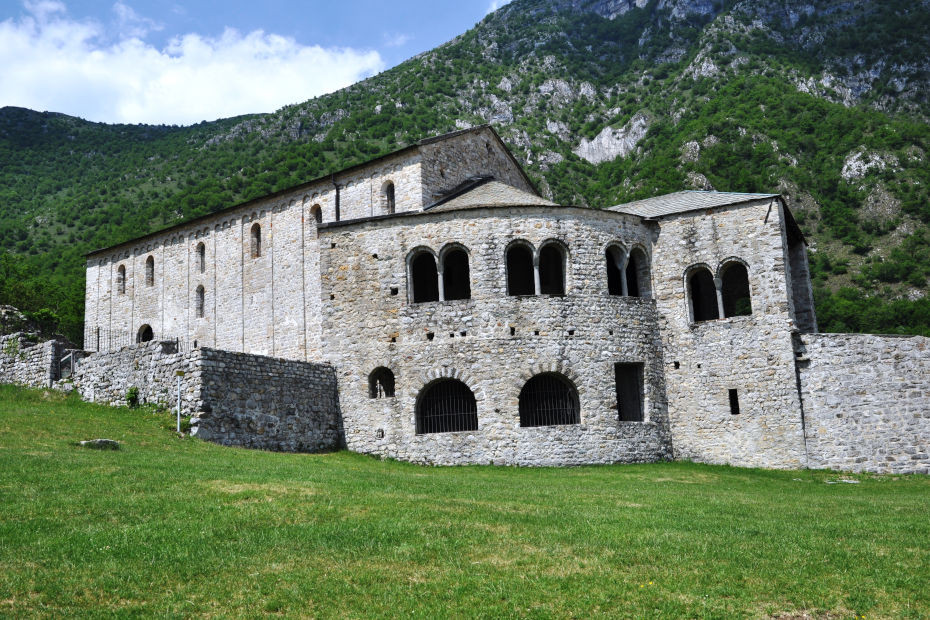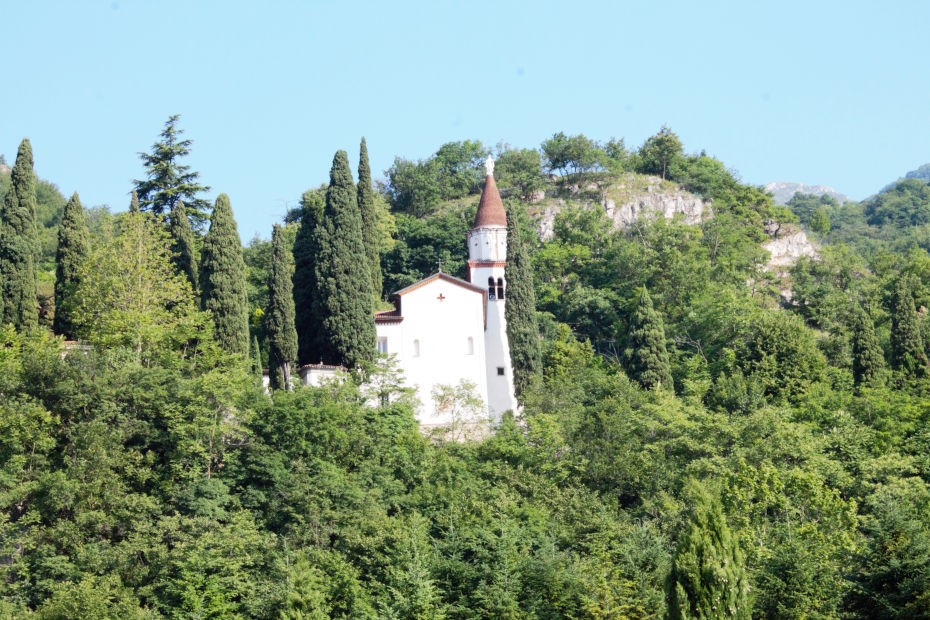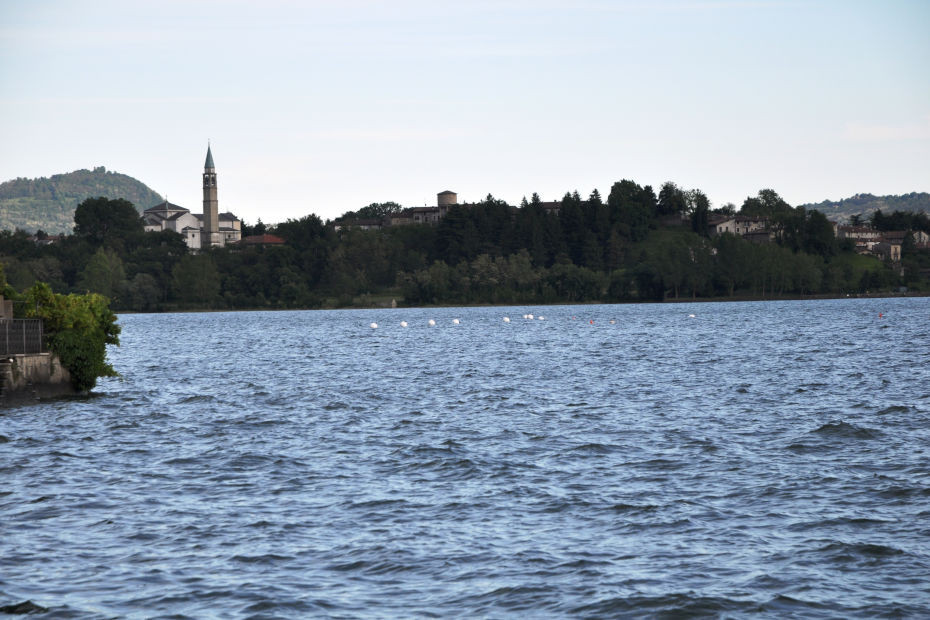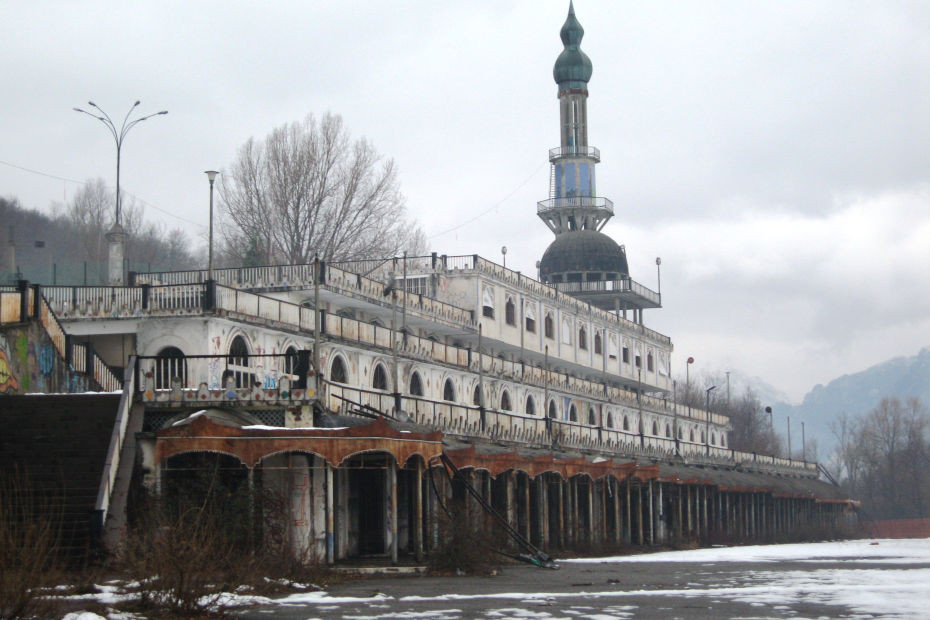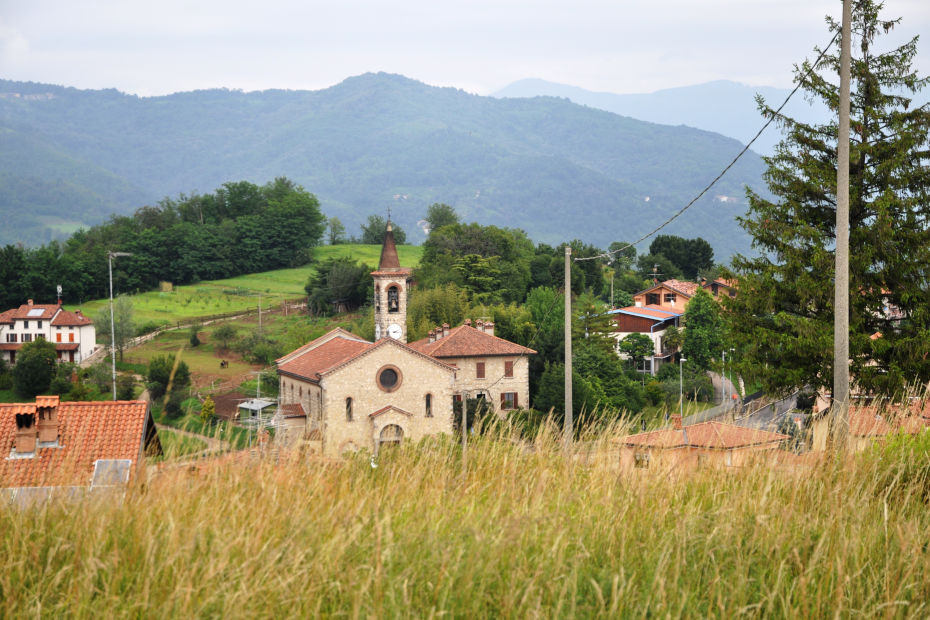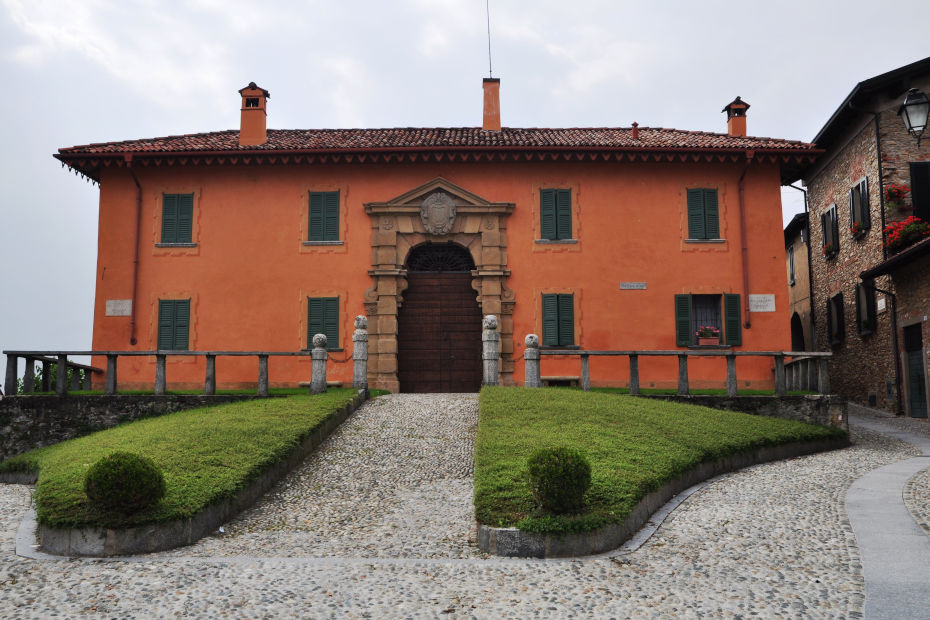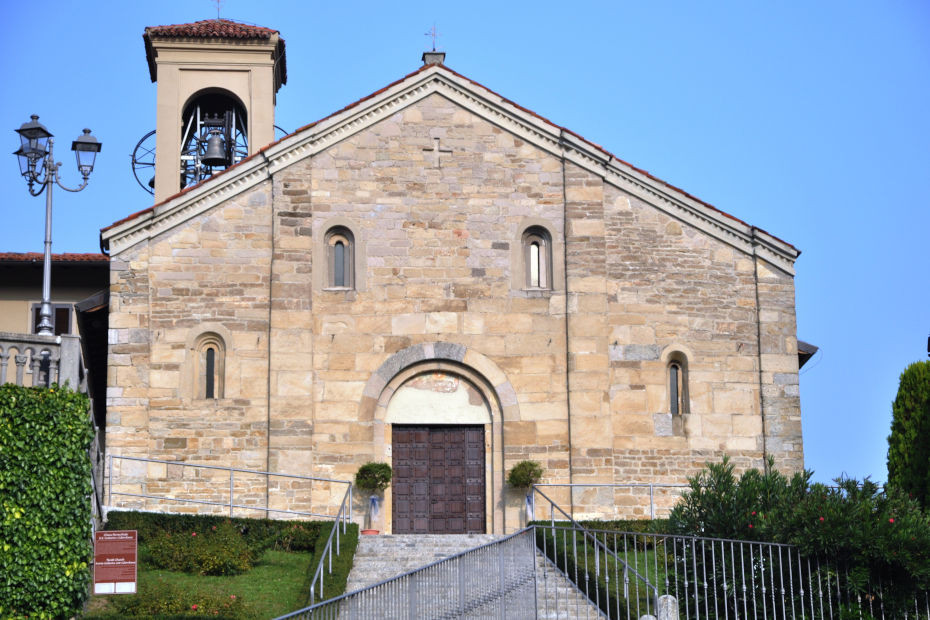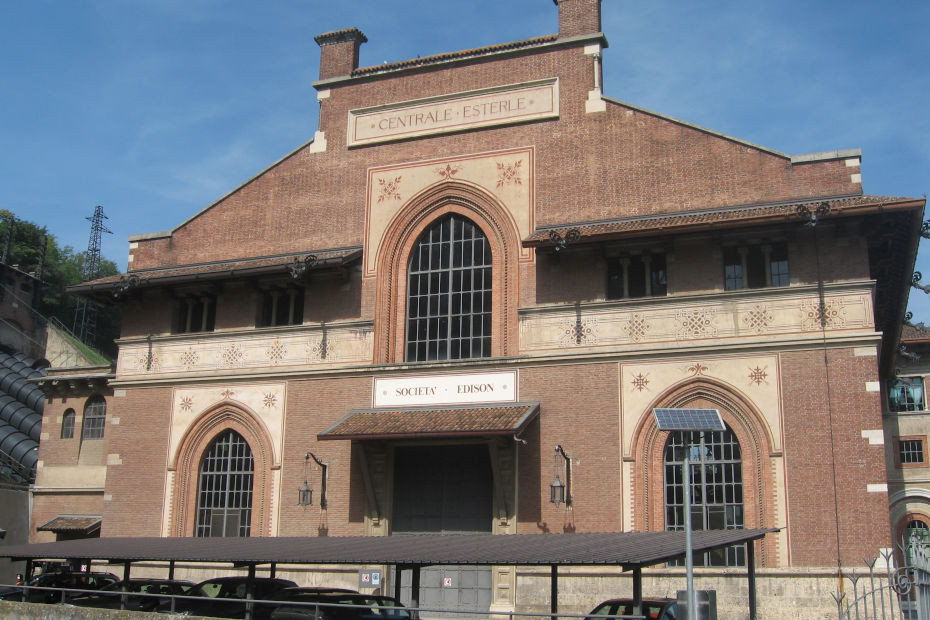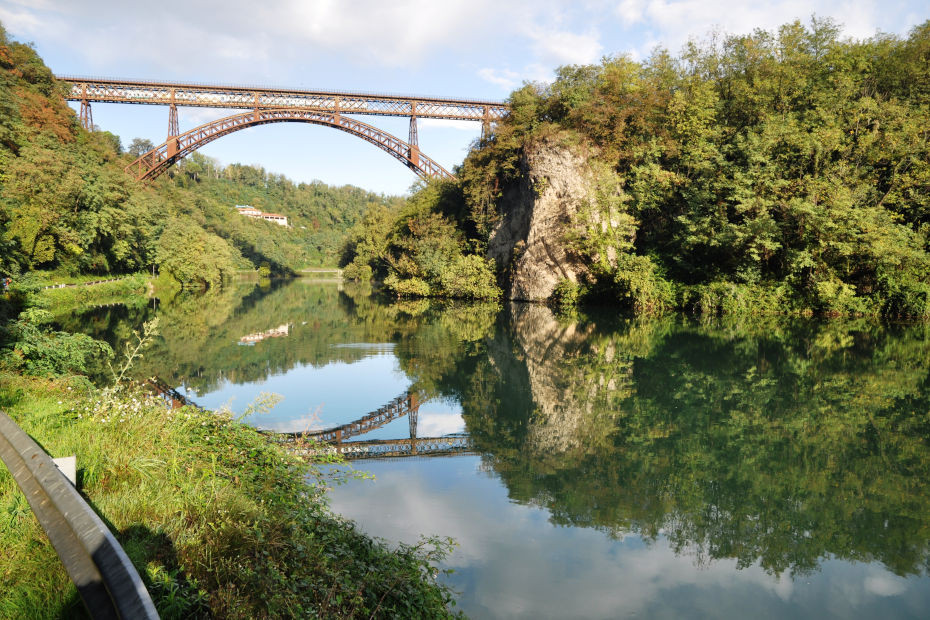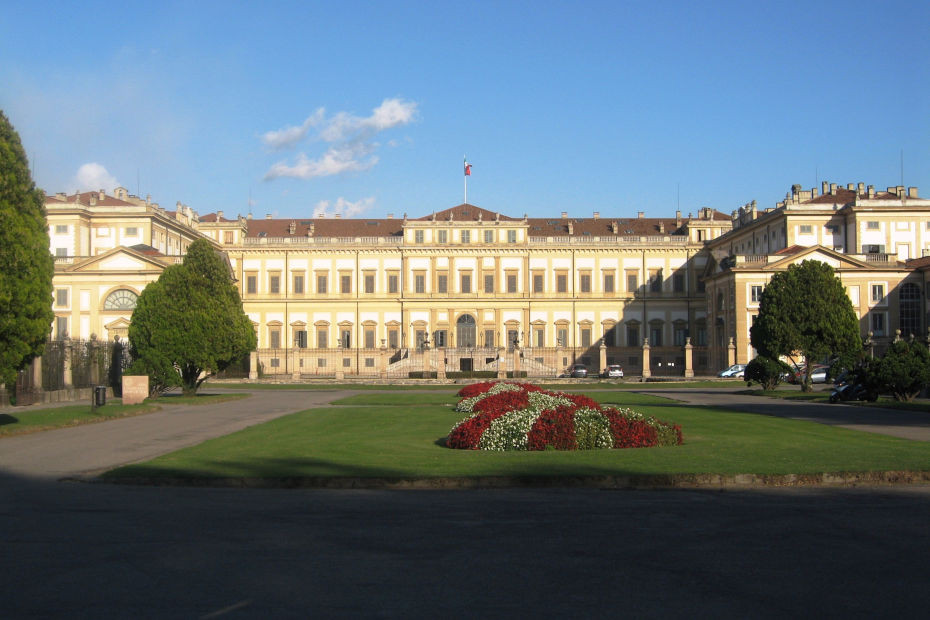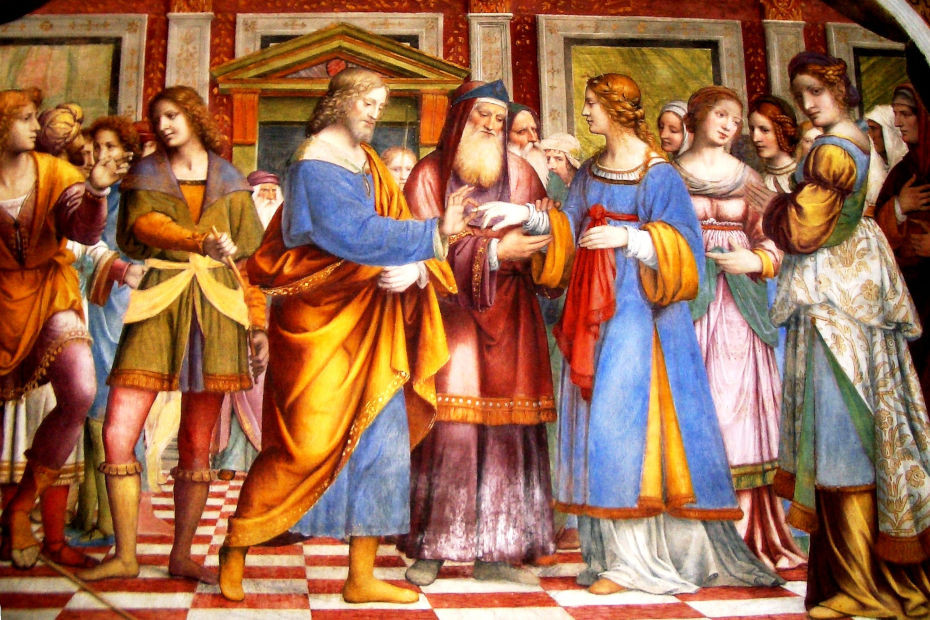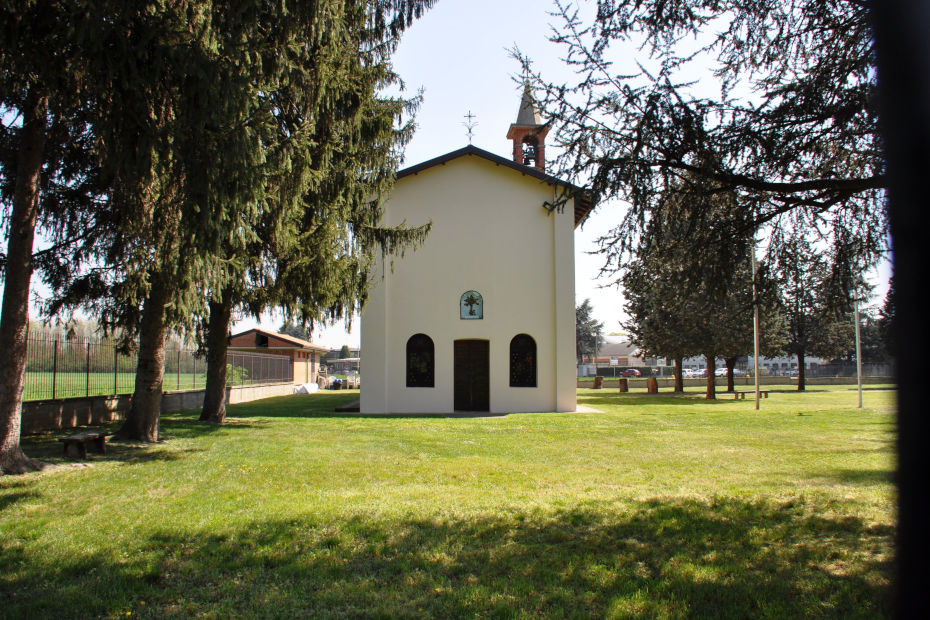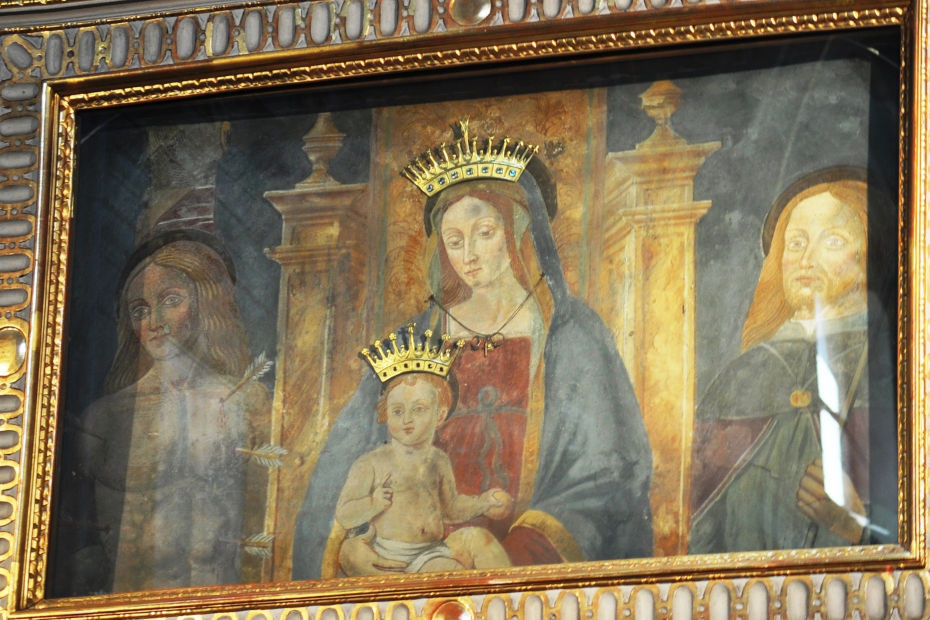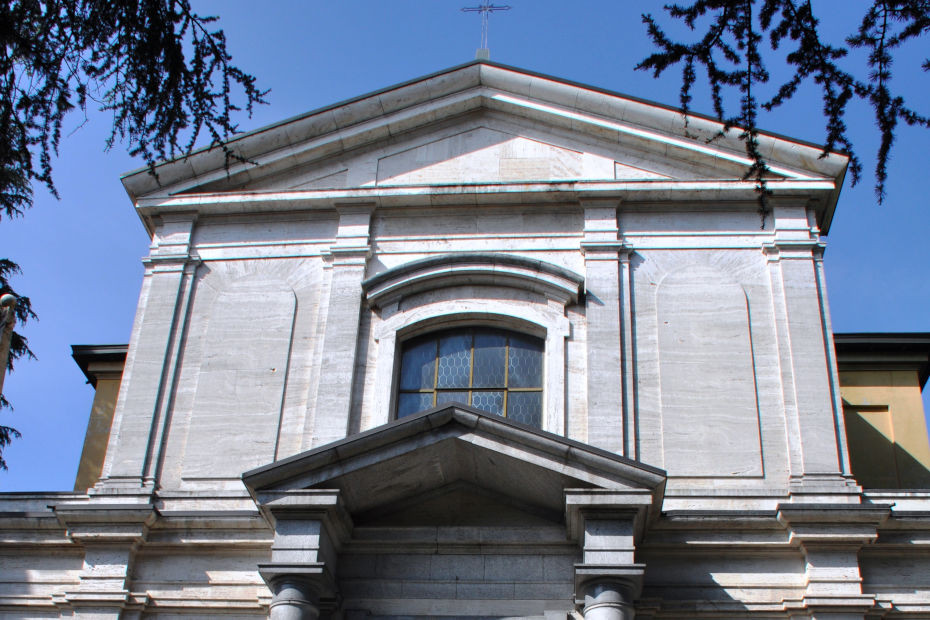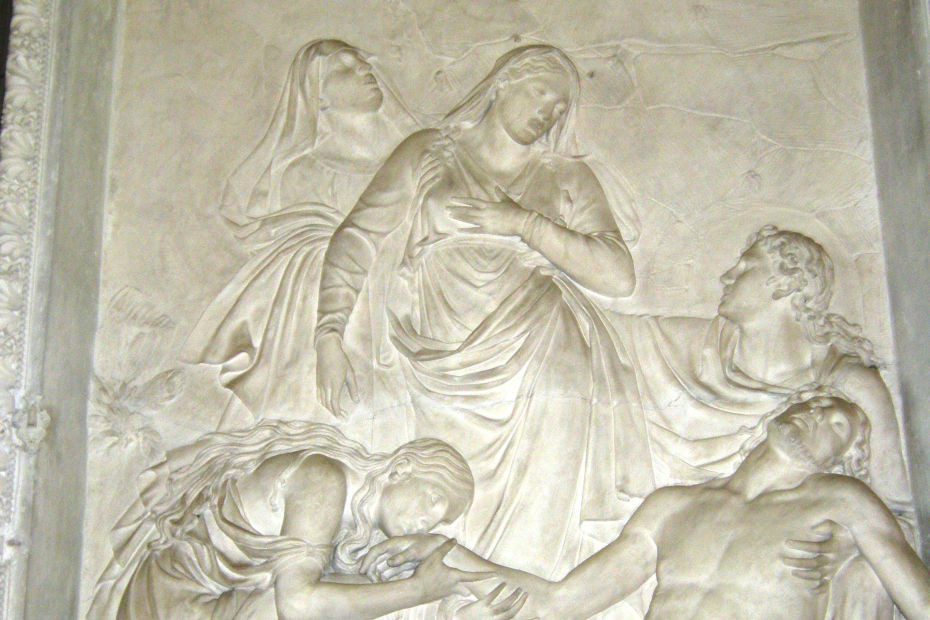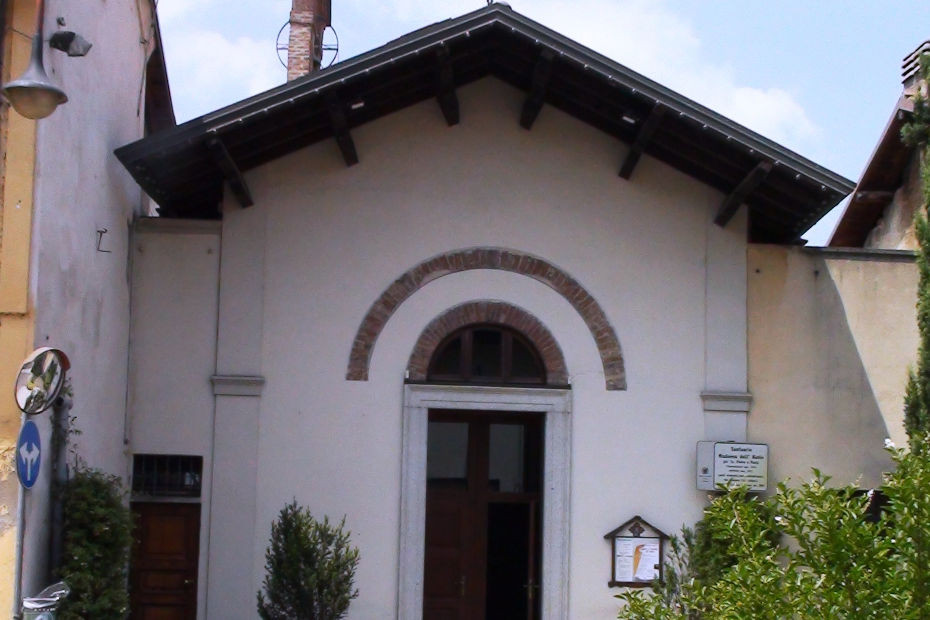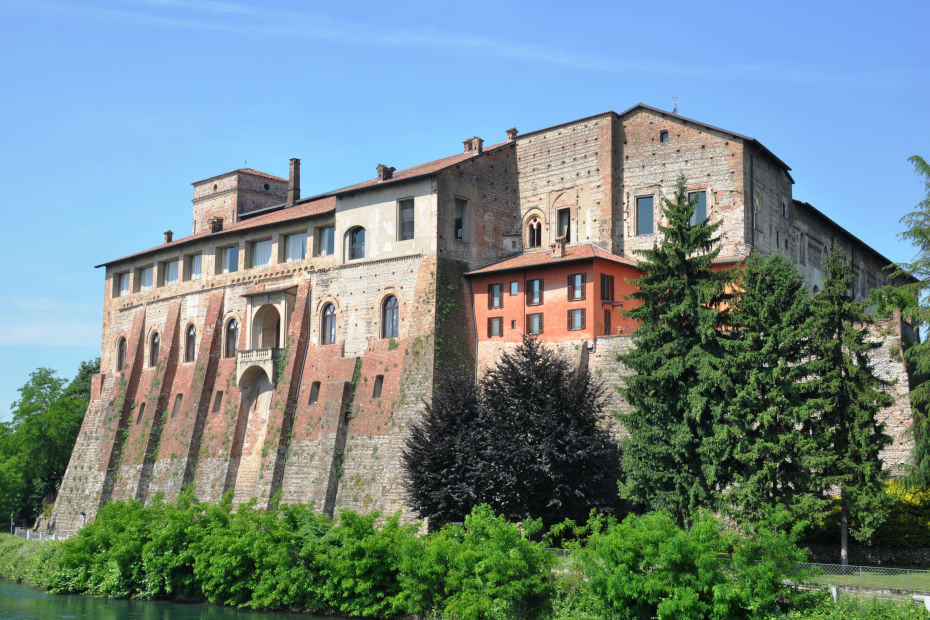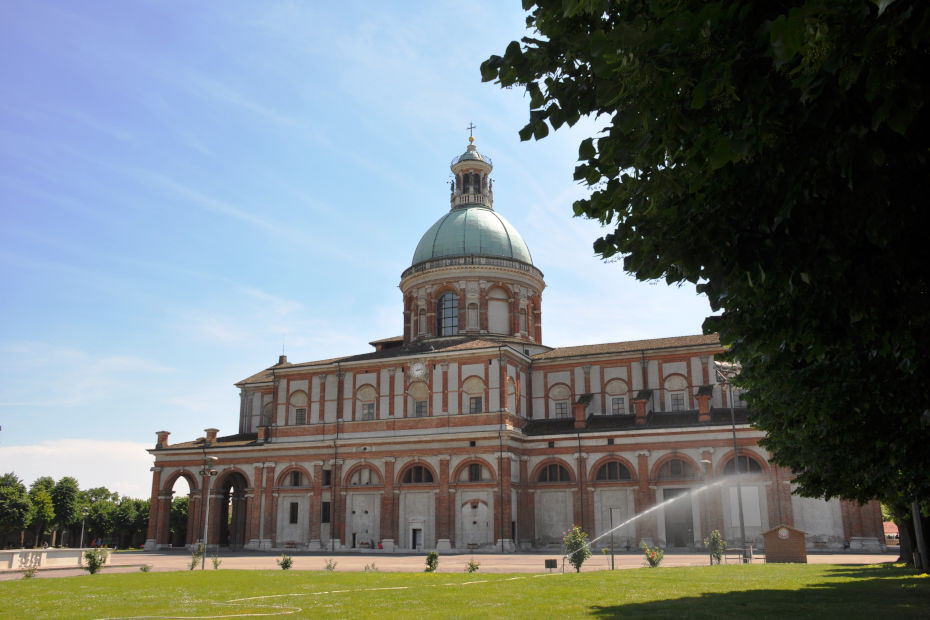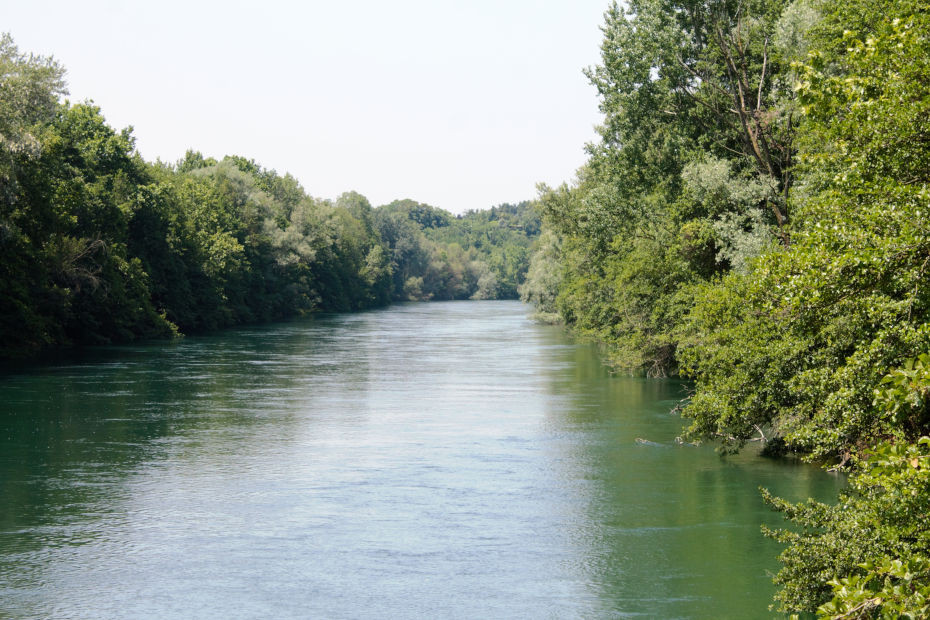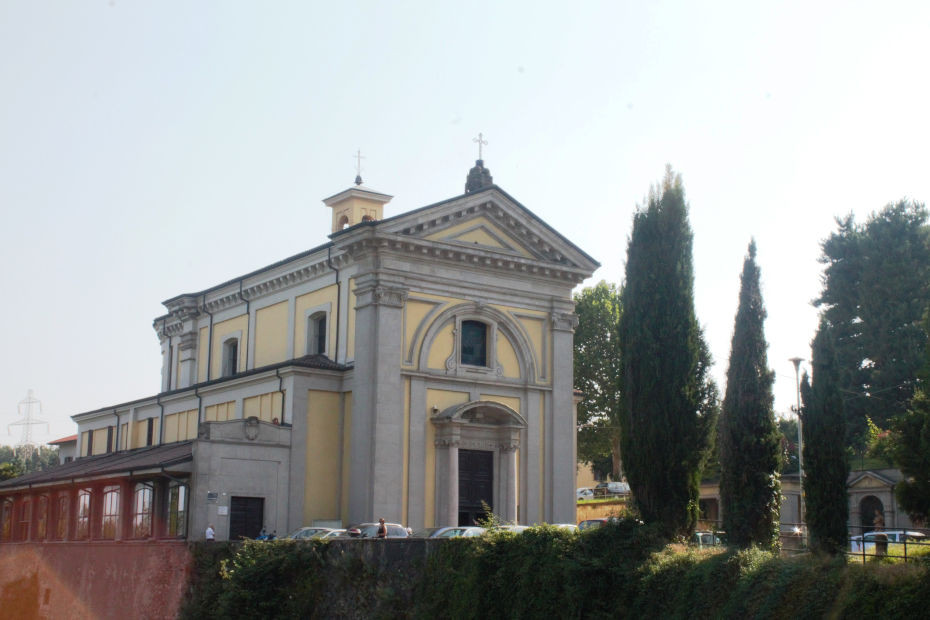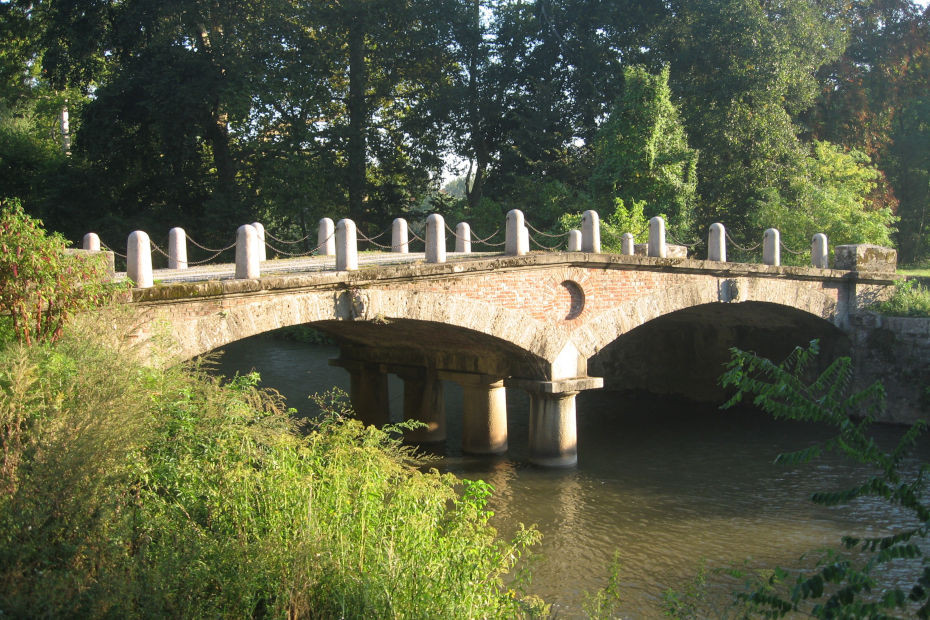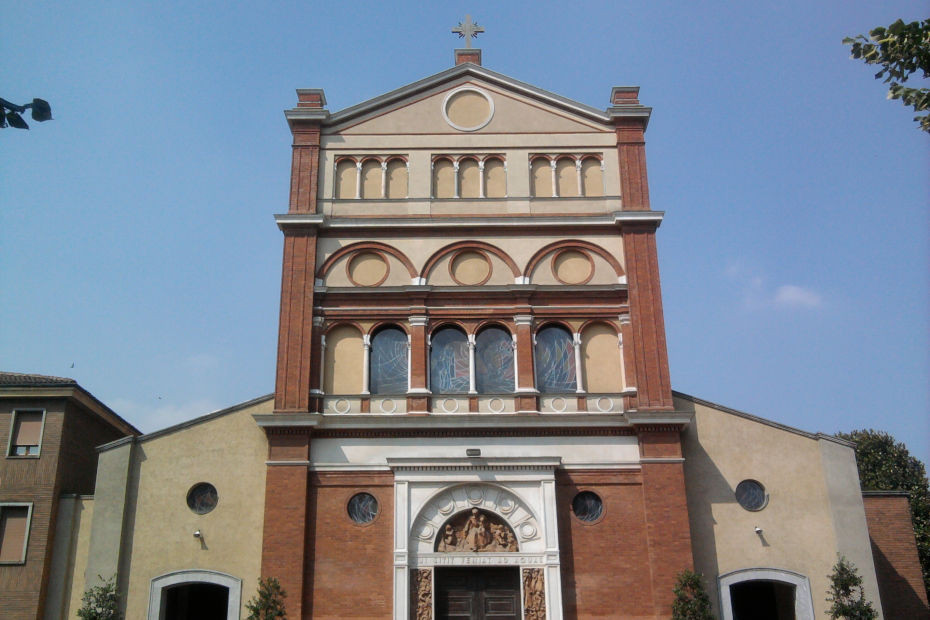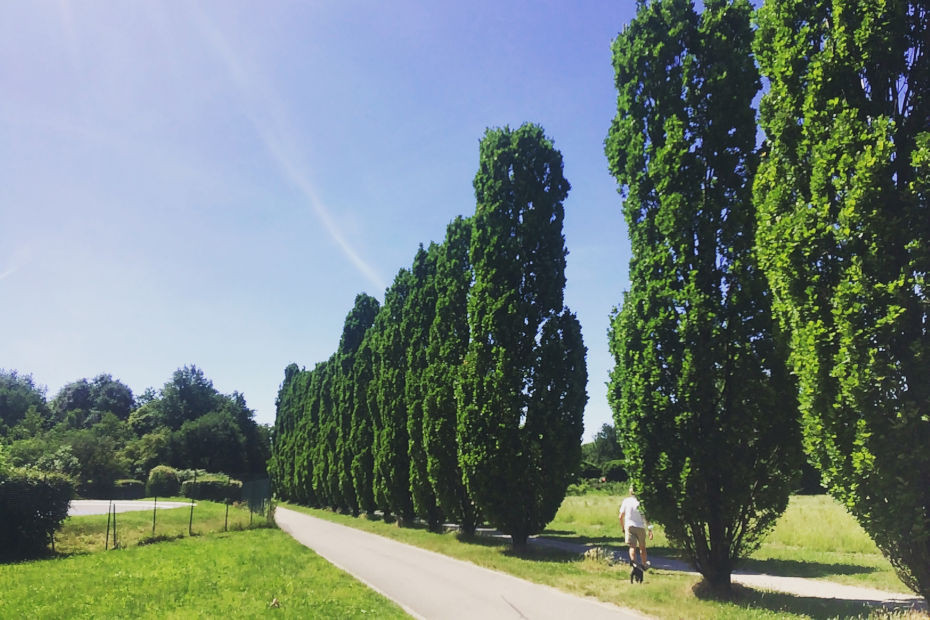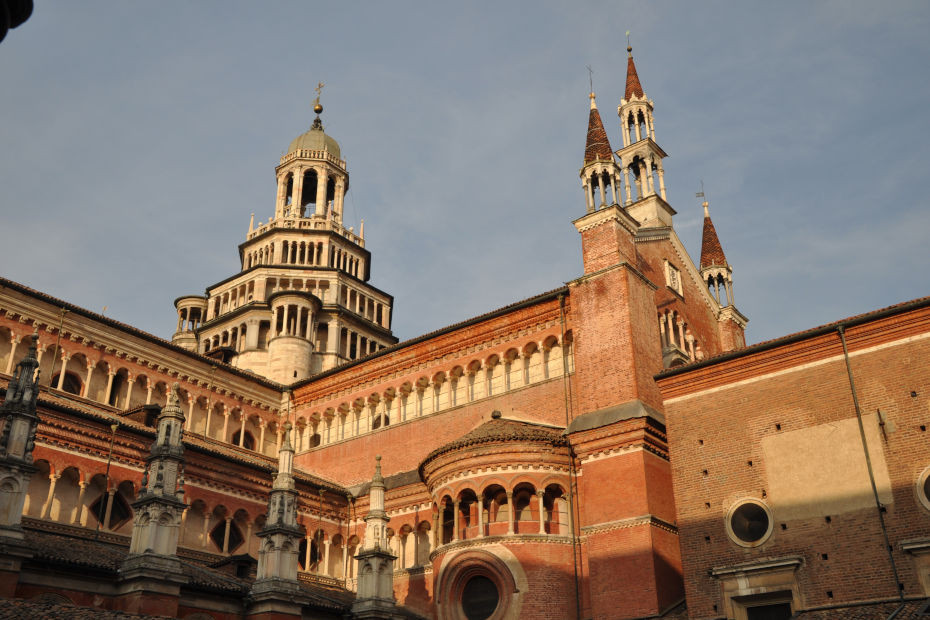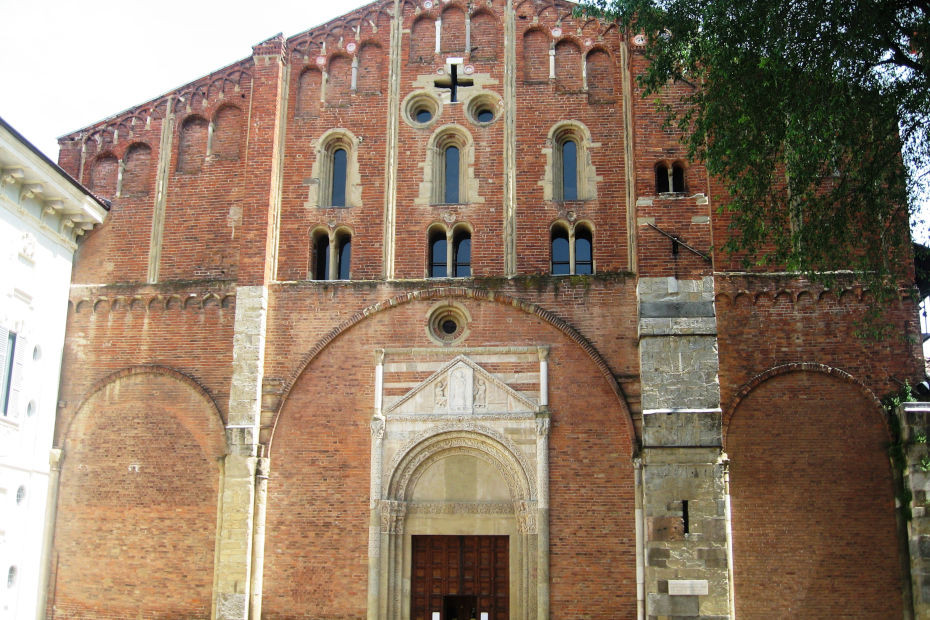- Itinerari
- Religious Tourism
St. Augustine's Way
The Way of St. Augustine is a Marian pilgrimage in the name of the Saint of Grace, designed to reach and connect in its stages fifty Marian shrines in Lombardy.
The route also touches on three Lombardy localities involved with the figure of Augustine of Hippo: Rus Cassiciacum (today Cassago Brianza, the place of his conversion), Milan (the imperial capital city and site of his baptism) and Pavia, where the Saint's relics are found.
It is linked to the figure of Augustine of Hippo, who lived between the fourth and fifth centuries, a Christian philosopher, bishop and theologian, author of the Confessions, a work that has spanned the centuries for its modernity on the theme of the relationship between human freedom and divine grace.
Brianza, and in particular Cassago, was fundamental in his life. It was there, in the autumn of 386, that Augustine converted to Christianity.
The route involves a considerable extension on foot - in both directions - from Pavia to Genoa (the city where Augustine's relics were landed in the 7th century, to be transferred to Pavia along the Via del Sale). The current length of the Italian routes is 926 km.
A continuation of the route for an additional 605 km is possible on North African soil, from Tunis-Carthage to Hippo and back, passing through Tagaste.
The path is represented as a rose.
The flower is an enclosed circular route of more than 350 km, to be covered ideally in 15 days of walking: it begins and ends in Monza, touching 30 Marian shrines and passing through the locality of Rus Cassiciacum.
The Eastern Leaf is an approximately 99-km route from Milan to Monza in an easterly direction along the Villoresi and Martesana canals, touching 8 Marian shrines and providing a walking connection to the route for pilgrims arriving from Orio al Serio airport. To be covered in 4 days.
The Western Leaf is a route from Monza to Milan in a westerly direction along the Villoresi Canal and the Waterways of the Expo 2015 area, to touch 8 Marian Shrines and ensure walking connection to the route to pilgrims arriving from Malpensa Airport. It is a stretch of about 68 km to be covered in 4 days.
The stem joins the cities of Monza, Milan, Pavia and Genoa along the Naviglio Grande, the Naviglio Pavese and then along the Apennine Via del Sale. In Lombardy it runs about 68 km to Pavia. To be covered in 3 days.
Traveling as "Pilgrims of Hope" this route during the Jubilee year 2025, one can stop at several Jubilee churches:
- Shrine of Our Lady of the Woods in Imbersago (LC)
- Shrine of Santa Maria delle Grazie in Monza (MB)
- Basilica of San Martino and Santa Maria Assunta in Treviglio (BG)
- Sanctuary of Santa Maria del Fonte in Caravaggio (BG)
- Parish Church of Santa Maria Assunta in Cernusco sul Naviglio (MI)
- Metropolitan Cathedral of Santa Maria Nascente - Milan Cathedral
- Basilica of Sant'Ambrogio in Milan
- Cathedral of Santo Stefano Martire and Santa Maria Assunta in Pavia
- Basilica of San Pietro in Ciel d'oro in Pavia
- Shrine of the Blessed Virgin of Sorrows in Rho (MI)
- Shrine of the Blessed Virgin of Miracles in Saronno (VA)
- Shrine of Saint Peter Martyr in Verona
Information on organized proposals on the route of the walk during the Jubilee year at the website: www.camminodiagostino.it
Mostra cosa c'è nelle vicinanze:
Itinerary stages
1. From Monza to Rancate di Triuggio.
The first day includes three stages, totaling 20 km.
Stage 1: Monza - Vedano al Lambro
Stage 2: Vedano - Lissone
Stage 3: Lissone - Rancate di Triuggio
The walk begins in Monza, the stronghold, or 'bud' of the whole walk, where the shrine of S.Maria delle Grazie is located near the southern entrance to Monza Park.
Monza deserves a careful visit, for the Cathedral with the Stories of Queen Theodolinda, a late Gothic masterpiece by the Zavattari brothers (1444), the Museum and Treasure of the Cathedral, the historic center with the Arengario, evidence of a long and glorious past, from Roman times, to the Longobards, to the communal age. Wanting to devote an entire day to the city, one should not forget the Villa Reale and Park, with villas currently used for different functions.
The area where the walk develops is highly urbanized: the first destination is Vedano al Lambro, with the sanctuary of the Madonna della Misericordia, then Lissone with the sanctuary of the Madonna del Borgo, then passing through Biassono to arrive at the sanctuary of the Madonna Assunta di Triuggio, in the locality of Rancate. Food services, pharmacies and public transportation are available in all locations.
Setting aside the crossing on urban roads of the upper Monza area, an element of interest of the walk concerns the third stage when the route follows, on a path, the Lambro Valley, a natural park.
2. From Rancate di Triuggio to Binzago di Cesano Maderno.
The second day will involve running three stages, totaling 24 km.
Stage 4: Rancate di Triuggio - Seregno
Stage 5: Seregno - Desio
Stage 6: Desio - Cesano Maderno Binzago
The second day of the Camino begins in Rancate di Triuggio, continuing up the Lambro Valley. A first stop after Albiate may be in nearby Agliate to visit the Romanesque basilica of Ss. Peter and Paul with the adjoining baptistery with its very rare ennagona plan. Continue along the calle del Lambro to Verano Brianza,
Leaving Verano Brianza and the Lambro valley, we ascend over the high Milanese plain, heading toward Seregno where we meet the shrine of the Madonna of St. Valeria where numerous ex-votos are preserved, precious evidence of religious custom in Brianza over the last three centuries.
The next stage-short-leads from Seregno to the shrine of the Madonna Pellegrina in Desio, where you can see Villa Tittoni Traversi, a work by Piermarini.
Third and final stage of the day: after Desio continues on paved roads and some dirt roads; the end of the day's walk is at the shrine of Madonna della Frasca, in Binzago, Cesano Maderno.
A must-see, passing through Cesano, is the Palazzo Arese, a 17th-century achievement, a splendid prelude with its garden to the sumptuous settings of the Baroque.
Much of the walk is on urban and paved roads, while the first part of the route is still within the Park.
3. From Binzago di Cesano Maderno to Cantù.
The third day will involve three stages, totaling 29.1 km.
Stage 7: Binzago di Cesano Maderno - Carimate
Stage 8: Carimate - Cucciago
Stage 9: Cucciago - Cantù
The route of the third day - stage 7 - starts in Binzago heading north, ending up crossing the historic center of Cesano with the Arese Borromeo Palace and park.
The valley of the T.Seveso and the secondary valley of the T.Certosa serve as markers for this first part of the day's walk.
We pass through Seveso and Bosco delle Querce, the rehabilitated area of Icmesa where the great dioxin environmental disaster occurred.
It continues until it crosses Meda with the fine oratory of S. Vittore and reaches Cabiate with the shrine of S. Maria Annunciata. A change in the landscape is felt as we approach the offshoots of the Como heathlands with its tall forests. We are in the Briantea Heath Park, which we then leave to return to the furrow of the Seveso valley.
Lentate sul Seveso is an intermediate destination for the oratory of S. Stefano, a Gothic factory dating from 1369, with a cycle of frescoes in the Lombard tradition.
Stage 7 heads to Carimate, a village leaning against the valley's edge with a belligerent castle and the shrine of the Madonna dell'Albero, formerly an aristocratic chapel in 1517. It owes its name to the fresco that covers the back wall, attributed to the school of Bergognone.
On stage 8 from Carimate a walk through the woods leads to the Sanctuary of the Madonna della Neve in Cucciago, begun in the 1700s and finished with a facade by Giacomo Moraglia in 1857. It was originally the Romanesque oratory of S.Vincenzo, of which the small bell tower remains in the adjoining farmhouse.
Last stretch - stage 9 - from Cucciago we walk on asphalt and dirt roads to reach Cantù where, near the cemetery, stands the Sanctuary of the Madonna dei Miracoli, a sacred building dating back to 1555 but extensively rebuilt after the mid-19th century. The sumptuous interior decorated with frescoes of the best production of Giovan Mauro della Rovere (1638) is worth seeing.
The day is challenging, not because of the elevation gain but because of the length. It is possible, however, to break it into two parts, as the intermediate locations offer hosting services.
4. From Cantù to Mariano Comense
The fourth day will involve two stages, totaling 23.9 km.
Stage 10: Cantù - Alzate Brianza
Stage 11: Alzate Brianza - Mariano Comense
Stage 1: Leaving the village of Cantù, the route enters the heart of Brianza, the Lombard area of great productive capacity, once admired by artists and writers, an area that extends north of Milan touching Como and Lecco as its extremes.
Already on leaving Cantù, a visit to the Romanesque complex of Galliano is a must: the Basilica and Baptistery, dating from the late 10th century, with very important coeval frescoes.
The route heads north into the hills of Como's Brianza region, which have escaped urbanization. The first natural area crossed is the Spina Verde Park, then the Lake Montorfano Nature Reserve.
The path bends southeast along the Brughiera Briantea Park, to arrive at the end of the first stage, at the Sanctuary of the Madonna di Rogoredo in Alzate Brianza, a venerated place and the site of one of the most popular fairs in Brianza.
The September Secular Fair known as Della Madonna di Rogoredo is a livestock-related event that takes place annually to coincide with the religious Feast of the Birth of the B.V. Mary on September 8. It takes place along the streets surrounding the shrine, organized by the municipality and a committee of volunteers.
The second stage of the day resumes with a route through the woods of Olgelasca, where the country church of St. Adrian is worth a stop. The path resumes to arrive in Mariano Comense the stage ends at the Madonna di San Rocco.
The route alternates between paths and asphalt roads, and does not present any particular difficulty: it is necessary to pay attention to the yellow trail marker, to follow the trail's sculpins, especially in the wooded areas.
5. From Mariano Comense to Monguzzo
Two stages are planned for the fifth day, totaling about 20 km.
Stage 12: Mariano Comense - Inverigo
Stage 13: Inverigo - Monguzzo
The route leaves Mariano Comenseand continues northward into Brianza, where traces of a landscape celebrated over the centuries can be found among factories, roads and heavily urbanized areas. It crosses the Nature Reserve of the Fountain of Guercio to arrive in Inverigo.
Inverigo, a place of delight of Lombard nobles remembered by Ugo Foscolo, welcomes walkers with its villas, gardens, the Viale dei Cipressi, the orrido, and one of the Marian shrines on the way, S. Maria della Noce. Inverigo was once a center of silk cocoon trade, and the covered market of S. Maria della Noce was its heart. The church of the same name was founded with a Greek cross plan in 1519, completed in 1570, after the visit of Carlo Borromeo.
In this first part of the day, the municipalities of reference are Mariano Comense, Brenna, Inverigo.
The route continues on paths and country roads to the Pomelasca Estate, with Villa Sormani and the Red Church, in Lurago d'Erba. The place is worth a stop, for its scenic, architectural and historical aspects.
Next destination is Lambrugo before reaching Monguzzo, which overlooks Lake Alserio, where the shrine of Our Lady of Lourdes, a stop on the Camino, stands.
On this second stage, the municipalities of reference are Lurago d'Erba, Lambrugo, and Monguzzo.
6. Monguzzo to Caslino d'Erba.
The sixth day involves running only one stage, for a total of 17 km.
The walk begins at the shrine of Monguzzo, heading north along the Lambro Valley Park to Lake Alserio.
It crosses the Piano d'Erba, a basin inside the Brianza morainic circle, and arrives in Erba, with the Romanesque Church of Santa Eufemia.
The route approaches the first mountainous reliefs of the Larian triangle: at Crevenna is the church of Santa Maria degli Angioli, which was attached to a Franciscan convent. On this area, architect Leopoldo Pollack, commissioned by owner Rocco Marliani, built Villa Amalia, dedicated to his wife. The Villa hosted Parini, Monti, and Foscolo.
It climbs further, and before reaching Caslino d'Erba you come across the hermitageof San Salvatore above the village of Crevenna.
End stop in Caslino d'Erba, formerly a historic center of silk industries. Not far from the built-up area, along the old road to Asso, one encounters the oratory of S. Calogero, altered in the 17th century but still accompanied by a Romanesque bell tower (second quarter of the 11th century) considered among the best preserved in Brianza.
The Sanctuary of Our Lady of S. Calogero is a stop on the Saint Augustine's Way on the sixth day.
7. Caslino d'Erba to Valmadrera.
The seventh day of the walk involves only one stage, and it is the first of the two "alpine," or rather "pre-alpine," stages of the walk.
Compared to other stages, it is more challenging, but offers better environmental conditions and beautiful landscapes. It also leaves behind us the more anthropized Brianza.
The route starts from the Sanctuary of Madonna di San Calogero in Caslino d'Erba and winds in a northwesterly direction, flanking the upper Lambro Valley and descending into the historic center of Canzo.
From here it climbs the Val Ravella in the direction of the Corni di Canzo - a traditional hiking destination for Milanese and Brianza people - along the wooded Gajum valley. It meets the Sanctuary of San Miro al Monte, dating back to 1643, and the Terz'Alpe refuge, finally reaching the Colma, located at 1,000 meters above sea level.
At this point you cross the Passo del Fò and descend to the plateau of San Tommaso, with its small oratory with panoramic views. This is followed by a further rapid descent to the Sanctuary of the Madonna di S. Martino di Valmadrera, the end of the stage and the day's walk.
With this stage you arrive at the lake, opposite Lecco.
8. From Valmadrera to Pusiano
Theeighth day of the walk involves asingle stage and is the second of the two "alpine," or rather "pre-alpine," stages of the walk.
By car, the two locations are 7 kilometers apart. On foot, avoiding traffic and appreciating the mountains takes 15 with an elevation gain of almost 1,000 meters. However, the views, trails and places encountered along the way are worth the effort.
From Valmadrera a fairly steep path leads to Civate, where the medieval convent in the center of the town, a convent called the "House of the Blind," is worth a stop. From Civate a path climbs through the woods to reach the complex of S.Pietro al Monte (alt. 662), a mid-9th-century Romanesque church with its characteristic form (a single hall with two apses on the smaller sides) that recalls models of transalpine inspiration.
Of exceptional value is the ciborium preserved inside, and the wall frescoes are no less remarkable. The church stands on a beautiful lawn and offers a breathtaking view of Brianza, the Lecco mountains and Lake Annone.
But the ascent to Mount Cornizzolo is not finished, because the summit, at 1176 meters, must be reached, from which there is a panorama of the Grigne, the Corni di Canzo and Resegone.
The descent to Pusiano begins at this point. The road with wide hairpin bends still lets you see wide views of the Brianza lakes. At a certain point on the left you have to follow the sign for a path that leads to the sanctuary of the Madonna della Neve. The shrine is end of the Cammino, just above Pusiano.
The view of the lake from the lookout point is worth a long stop to recover from the exertions of the stage's climbs and descent.
9. From Pusiano to Cassago Brianza
The ninth day of the Camino also takes place in a single stage, definitely long although not too demanding in terms of "elevation gain." Protagonists of the day are the Brianza lakes and framed by magnificent views.
The route starts from the Sanctuary of the Madonna della Neve in Pusiano and moves in a southeasterly direction touching Lake Pusiano to the historic center of Bosisio Parini. The town was the birthplace of Giuseppe Parini, and here it is possible to visit his birthplace.
The route then continues to Annone di Brianza, where a visit to the Romanesque church of San Giorgio is recommended, and on to Oggiono, on the southern shores of the lake of the same name.
In Oggiono, with its superb belvedere, you can visit the plebian church and baptistery, with works by Marco d'Oggiono, a pupil of Leonardo.
Leaving the lake basin, the walker, on country roads and stretches of asphalt roads, ascends the belt of Brianza hills toward Molteno. Next, the route offers other interesting religious architecture: the Romanesque churches of Garbagnate Monastero (the church of San Nazaro and Celso and the church of San Martino) and finally the Santuario dei Morti dell'Avello in Bulciago. A short stretch at this point separates from reaching the destination: Cassago Brianza, with its historical-archaeological complex of Rus Cassiciacum, a place where Augustine of Hippo stayed from the autumn of 386 to the spring of 387, maturing his Christian conversion.
The route is long but not particularly difficult and offers remarkable views and many points of historical, artistic and religious interest.
10. Cassago Brianza to Bevera di Barzago.
The tenth day of the walk unfolds in a single stage - stage 18 - among the climbs and descents of the innermost Brianza.
The day's walk, which begins at the historic-archaeological complex of rus Cassiciacum in Cassago Brianza, moves in the shape of a large U.
At first it proceeds in a southerly direction, touching the Valletta Park and the town of Besana in Brianza with the small church of Santa Caterina, its villas and gardens, then, following that, it goes back in a northerly direction to Casatenovo along the Nava Valley Park, the Monastery of Misericordia in Missaglia and the Ville di Delizia in the historic center of Monticello Brianza. Places, these, of privileged vacationing of the Milanese nobles in the 17th and 18th centuries.
Before reaching the Sanctuary of Santa Maria Nascente in Bevera di Barzago, the final destination of the route, we pass by the Romanesque church of San Salvatore in Barzanò, which is well worth a visit.
The route, as in the previous stage, is long but not particularly difficult and offers the walker the chance to admire remarkable landscape views and natural beauty, as well as beautiful villages and important places of worship.
11. From Bevera di Barzago to Airuno.
Day 11, the end of this first core of the Rose Walk-the Flower-is approaching.
The day includes two stages totaling about 18 km.
Stage 19: Bevera di Barzago - Valgreghentino
Stage 20: Valgreghentino - Airuno (Rocchetta).
With these two stages we approach and climb over Mount Crocione, the high ground that divides inland Brianza from the Adda valley.
After departing from Bevera, where we leave the shrine of Santa Maria Nascente, we walk on trails and country roads to climb to the Campanone and Colle di Brianza. The Campanone della Brianza is a tower that popular tradition has made a symbol of local identity. It continues to the village of Ravellino, and further up to the hamlet of Figina.
The route continues to Consonno, the so-called ghost town, and then to the hamlet of Dozio. A few more dozen meters and the first stage of the day comes to an end, at the Shrine of Our Lady of Czestochowa in Valgreghentino. Note on the way the passage between nuclei of houses of old farming tradition, such as Figina, Biglio, Dozio.
The second stage follows a path through the woods to Airuno, where we rejoin the main access road to the Sanctuary of the Madonna della Rocchetta. The shrine is at the top of a flight of steps, on a knoll overlooking the Adda River.
12. Airuno to Montevecchia
Day 12 will involve two stages, totaling about 24 km.
Stage 21: Airuno - Colle Brianza
Stage 22: Colle Brianza - Montevecchia
Day 12 of the walk, which starts from the Sanctuary of the Madonna della Rocchetta in Airuno, begins uphill.
Colle di Brianza, along with Monte Barro and Crocione, bounds to the west the valley of the Adda River, which reforms here after Lake Como.
The first stage conquers this relief at an elevation of 829 meters at the Hermitage of S. Genesio and then descends southward into the countryside, with cultivated fields arranged in terraces on the hillocks, toward the village of Campsirago. The first stage ends at Madonna del Sasso in the town of Colle Brianza.
The walk then resumes toward Olgiate Molgora, in the village of Mondonico. Continuing to walk in a southerly direction, you enter the Montevecchia and Curone Valley Park and pass through the locality of Monte, where there are the so-called natural "pyramids" and relative panoramic plateau with cypresses.
Then you descend remaining in the Park to the Valley of Santa Croce in Missaglia and finally, still heading south, you ascend to the final destination: the Sanctuary in the high hills of the Municipality of Montevecchia.
Montevecchia is a small village perched on the hill directly overlooking the upper Milanese plain, a gathering place for peaceful excursions and delicious banquets of traditional local cheeses.
The sanctuary, dating from the early 17th century, is a belvedere of first excellence, heir to a place that would have it as 'Mons Taegia,' or Monte Fiaccola, a control and signaling point.
13. Montevecchia to Imbersago
Day 13 will involve two stages, totaling about 22 km.
Stage 23: Montevecchia - Merate Sabbioncello
Stage 24: Merate Sabbioncello - Imbersago
The walk starts from the Sanctuary of the Blessed Virgin of Carmel in Montevecchia and continues down into the valley of Curone Park.
The route continues in a southerly direction through woods and cultivated fields. It then touches on the Sanctuary of Osnago, where the magnificent Villa Arese is noteworthy, and climbs northward in the direction of Cernusco Lombardone and Merate.
Here, the hilly scenery was an invitation for the placement of splendid gardens and villas: sumptuous mansions that spanned all the architectural styles in vogue between the 17th and 19th centuries.
Also noteworthy is the art of the adjoining gardens, with terraces, parterres, perspective avenues, nymphaea, and vegetable galleries. Worthy of attention, in addition to the villas and gardens, are the farmsteads and nuclei that recall the agricultural past of this area.
Places of faith were also placed in privileged panoramic positions, preceded by long flights of steps around wooded hills. The Sanctuary and Convent of Santa Maria Nascente in the locality of Sabbioncello di Merate, where the first stage of the long day's walk ends, is also on a small rise.
From Merate we proceed to the locality of Sartirana: the path skirts the small lake and then takes the direction towards the locality of Cassina Frà Martino. A long path descends toward the Adda valley to the locality of Arlate, with the remarkable Romanesque church of San Colombano.
Continuing south, one arrives at the beginning of the long flight of steps that leads to the Sanctuary of the Madonna del Bosco, in Imbersago, the final stop on the route. Imbersago is also known for the ferry designed by Leonardo da Vinci, which crosses the Adda River by exploiting the current and joins the Lecco shore with the Bergamo area.
14. Imbersago to Ornago.
The fourteenth day includes two stages, totaling about 27 km.
Stage 25: Imbersago - Paderno d'Adda
Stage 26: Paderno d'Adda - Ornago
The route starts from the Sanctuary of the Madonna del Bosco in Imbersago and goes through the historic center of the town, descending along the banks of the Adda River to the landing stage of the so-called "Traghetto di Leonardo."
The route finds here, in the middle Adda valley, a first-rate natural setting. The valley, in this section is deeply sunken as in a canyon. The river foams through rocky cliffs rising out of its bed.
The walker continues south along the towpath alongside the river, passing under the iron bridge at Paderno d'Adda, with its historic naviglio, a bold navigable work.
Here, near the banks, you can visit the second shrine of the stage, that of the Madonna della Rocchetta. The church is set in an evocative landscape, dear to the memory of Leonardo da Vinci. The genius was in fact inspired by these places for the backgrounds of some of his works, such as the Mona Lisa and the Virgin of the Rocks.
Completing the natural picture is the work of man with some monumental hydroelectric power plants, Bertini and Esterle, the first to supply energy to Milan and Brianza.
From here the route ascends from the riverbed toward the towns of Cornate d'Adda, Aicurzio, Sulbiate and Bellusco, an area where agriculture has given way to small-scale manufacturing.
It then heads south, toward the hamlet of Cascina Camuzzago, before entering the Rio Vallone Park and reaching the last shrine of the day, in the municipality of Ornago.
15. From Ornago to Monza
Day 15 will involve two stages, totaling about 23 km.
Stage 27: Ornago - Vimercate
Stage 28: Vimercate - Monza
The final day begins at the Sanctuary of the Madonna del Lazzaretto in Ornago, completing the so-called "rose flower" belt.
Scheduled are visits to two Marian shrines, in Vimercate and Monza, where the Way began.
The route runs in a westerly direction and begins by entering the Rio Vallone Park and then the Molgora Park. It then proceeds to the historic center of Vimercate, where it is possible to admire the Sanctuary of the Blessed Virgin of the Rosary.
Not to be overlooked is a stop in Oreno, at the grandiose Villa Gallarati Scotti, continuing on to Concorezzo and finally arriving in Monza, the final leg of the route. Here a visit to the cathedral, with its underground museum and iron crown, and the Sanctuary of Santa Maria delle Grazie is a must.
The main points of interest also include the Piazza dell'Arengario and the churches of San Pietro Martire and Carrobiolo.
It closes "the flower of the rose" by entering Monza Park from the main gate of the Villa Reale.
16. Monza to Saronno
It begins on the sixteenth day of the Camino the first day of the "Western Leaf of the Rose."
The day unfolds in two long stages:
Stage 1: Monza - Muggiò
Stage 2: Muggiò - Saronno
The day-the first on the so-called "Western Leaf of the Rose"-starts from the Shrine of Our Lady of Grace in Monza and includes visits to two additional Marian Shrines: Our Lady of the Chestnut Tree in Muggiò and Our Lady of Miracles in Saronno.
The route begins by leaving the gate of the Villa Reale and continues along the long tree-lined avenue heading west.
Here it starts a long journey along the towpath of the Villoresi Canal to Muggiò, where it stops at the Sanctuary of the Madonna del Castagno.
The route then continues by touching Nova Milanese, Varedo and Limbiate, with their villas of historical and architectural interest.
Continuing on, you leave the towpath and enter, still heading west, the meadows and woods of the Parco delle Groane, arriving in Caronno Pertusella. In the historic center, you can admire the Renaissance Chapel of the Purification and the fine 16th-century frescoes it houses.
Next, going up the Lura Park, one reaches the town of Saronno. Here is the shrine of the Madonna dei Miracoli, one of the grandest in Lombardy, a concerted work of the principal architects of the Milanese sphere in the 16th century. Inside, the pictorial apparatus of the best coeval Lombard and Piedmontese masters, including Bernardino Luini and Gaudenzio Ferrari, predominates in its splendor.
17. Saronno to Busto Arsizio.
The second day of the Western Leaf of the Rose and seventeenth of the Camino is in two stages:
Stage 3: Saronno - Gorla Minore
Stage 4: Gorla Minore - Busto Arsizio.
The walk starts from the Shrine of the Blessed Virgin of Miracles in Saronno and includes visits to two additional Marian shrines: the Madonna dell'Albero in Gorla Minore and Santa Maria in Piazza in Busto Arsizio.
From Saronno the route continues westward, entering the meadows and woods of the large Rugareto Park in Rescaldina and then into the woods of Gorla Minore where the first stop of the day at the Shrine ends.
It then descends into the valley of the middle course of the Olona River and from here begins the ascent to the historic center of Olgiate Olona. Finally, after a good stretch of road in a westerly direction, we reach the Sanctuary of Busto Arsizio. In the latter, also named after Our Lady of Help, there is a venerated 17th-century wooden statue of the Virgin who with a hieratic act stops the scourge of the plague with her hand.
18. Busto Arsizio to Rho
The 18th day of the Camino, the third of the Western Leaf of the Rose, is spread over three stages:
Stage 5: Busto Arsizio - Legnano
Stage 6: Legnano - Nerviano
Stage 7: Nerviano - Rho
The eighteenth day of the Walk, which starts from the sixteenth-century Shrine of Santa Maria in Piazza in Busto Arsizio, includes visits to three additional Marian shrines: the Shrine of Our Lady of Grace in Legnano, the Shrine of Our Lady of God the Sà in Parabiago and the Shrine of Our Lady of Sorrows in Rho, the final stage of the route.
The route winds all in a southeasterly direction, entering the Alto Milanese Park, which marks with its typical landscape the transition from the dry high plain to the low plain rich in water and resurgences. It continues by entering a largely urbanized area and passing through the historic centers of numerous municipalities. In Legnano, at the end of the first stage, we stop at the Sanctuary of Madonna delle Grazie.
The route continues through San Vittore Olona to Parabiago, the end of the second stage of the day and site of the second shrine of the long day's walk.
The route resumes towards Nerviano, Pogliano Milanese and Vanzago, where there is no shortage of places of interest, cultural and religious.
Finally we reach the Sanctuary of Rho, the end of this day's journey, an imposing building commissioned by Carlo Borromeo and designed by Pellegrino Tibaldi in 1584. Of later periods are the dome and the facade. The interior, with a single nave, is a valuable collection of works of art by contemporary and later Lombard artists.
19. Rho to Milan.
The nineteenth day of the Walk, the fourth of the Western Leaf of the Rose, is spread over two stages, largely within the city of Milan.
Stage 8: Rho - Milan
Stage 9: Milan (S. Maria della Colombara) - Milan (Duomo)
The route begins at the Shrine of Our Lady of Sorrows in Rho, includes a visit to an additional Marian shrine, that of Santa Maria della Colombara in Milan.
The route runs in a southeastern direction and initially passes through the Expo 2015 exhibition site in Rho. From here it enters the city of Milan via the Certosa di Garegnano, a 14th-century Visconti foundation, to arrive at the shrine of S. Maria alla Colombara, a small, little-known 19th-century church along Via Gallarate and once attached to a farmstead.
The path looks toward the center of Milan, to arrive at the Arco della Pace, Sempione Park and the Castello Sforzesco.
The day's walk ends on the parvis of Milan Cathedral, dedicated to St. Mary of the Assumption.
20. From Milan Piazza Duomo to Gorgonzola
The itinerary called The Eastern Leaf of St. Augustine's Way begins on Day 20 and is a circular route.
The day includes two stages and visits to two shrines.
Stage 1: Milan - Cernusco sul Naviglio
Stage 2: Cernusco sul Naviglio - Gorgonzola.
The day covers the territory east of Milan, which once belonged to the Contado della Martesana.
The itinerary starts in the Duomo, heading northeast from Piazza Scala toward Brera and Via San Marco to arrive at the Conca Leonardesca dell'Incoronata. The route continues, leaving on the left the new Milanese skyscraper district with the Bosco Verticale, the Isola, and the Palazzo della Regione.
It continues on the street where the Martesana Canal once flowed in the open, to arrive at the Cassina di Pomm in the Greco neighborhood and the bike/pedestrian path that runs alongside the Martesana, again visible.
The Martesana is also easily reached with the MM Red Line stop Gorla; a few steps and it runs alongside it as far as the Crescenzago neighborhood in the northeast of the city. And then again, you leave Milan as far as Cologno Monzese, Vimodrone and Cernusco sul Naviglio. Here the first stage ends and we stop to visit Cernusco for its villas and the shrine of S. Maria Addolorata.
The second stage of the day continues eastward along the right side of the Naviglio, passing through Cassina De' Pecchi, to arrive in Gorgonzola, where the day ends with a visit to the shrine of the Madonna dell'Aiuto.
In addition to the two shrines, the protagonist of the day is the Naviglio Martesana, a canal often unknown even to the Milanese.
The Martesana connects Milan with the Adda River from which it receives its waters at Concesa, just downstream from Trezzo sull'Adda. It was a navigable canal, but also used for irrigating fields. As the names of the towns crossed also remind us, this was an area of farmsteads, with cultivated fields, vegetable gardens and orchards. The Martesana was built during the time of Francesco Sforza, and work began in 1460.
21. From Gorgonzola to Caravaggio.
The long day includes three stages:
Stage 3: Gorgonzola - Inzago
Stage 4: Inzago - Cassano d'Adda
Stage 5: Cassano d'Adda - Caravaggio
The walk leaves Gorgonzola with the Shrine of Our Lady of Help, for a visit to three Marian shrines on a path between water and land.
One understands as one walks along the Martesana canal, dug starting in 1457, the function of this waterway in transporting goods from the Adda to Milan and irrigating the countryside. And also the open contrast between farmers who needed the water for the fields and the drivers of the barges, who could not pass if the water level dropped.
We walk in the opposite direction to the current, passing through Bellinzago to get to Inzago, to the Sanctuary of the Blessed Virgin of the Pilastrello, the end of the first stage.
From the shrine you return to the towpath to Cassano d'Adda. Passing the garden of Villa Borromeo, you arrive at the shrine of the Madonna del Miracolo, the second stop on the Cammino.
Then the route crosses the Adda River at the historic Cassano bridge, reaches Cascine San Pietro, and after a long walk on country roads, passing through small towns and farmsteads, skirting cultivated fields and stopping in front of a beautiful votive chapel, we reach Caravaggio.
The day ends at the Sanctuary of the Madonna della Fonte where on May 26, 1432, the Madonna is said to have appeared to a peasant girl. In 1575 on the site came the construction of a grandiose temple designed by Tibaldi.
22. From Caravaggio to Trezzo sull'Adda.
The Eastern Leaf of the Saint Augustine's Way on its third day (the twenty-second since it began) includes two stages:
Stage 6: Caravaggio - Treviglio
Stage 7: Treviglio - Trezzo sull'Adda.
The route leaves Caravaggio with the imposing Sanctuary of the Madonna della Fonte, to discover two Marian Shrines, having as its final destination the return to the water of the Martesana and Adda rivers.
The route returns to the Milanese province, heading northwest, aiming for Treviglio along a paved pedestrian road. It enters the town's historic center to reach the shrine of the Madonna delle Lacrime, the end of the first stage.
The path continues northwest again to reach the Adda River at Fara Gera d'Adda. Reaching the river bank, you cross it on the footbridge. You walk along the Adda's bank for about two kilometers to reach Vaprio d'Adda, where the towpath of the Naviglio Martesana is found again.
Alternatively, one finds the Martesana towpath at Groppello d'Adda after crossing the river on a bicycle/pedestrian bridge. Heading north, one reaches the Naviglio incile at Trezzo sull'Adda at the shrine of the Madonna di Concesa.
From the sanctuary's forecourt you can see the river below. Note, to the north, the ltalgen dam barrage, which creates a reservoir from which the Naviglio Martesana, which originates here, and the Crespi plant canal take water; just downstream from the dam a small wooden bridge allows the crossing of the Adda.
23. Trezzo sull'Adda to Monza.
The Eastern Leaf of St. Augustine's Way closes on the fourth day with a long route, divided into two stages.
Stage 8: Trezzo sull'Adda - Trezzano Rosa
Stage 9: Trezzano Rosa - Monza.
From the sanctuary of Concesa one must find the unpaved municipal road to Vaprio d'Adda, which leads to Villa Castelbarco. The route continues passing through some farmsteads to Cascina Cavallasco. The reference locality is Pozzo d'Adda. It comes to a country road, which arrives in the vicinity of Trezzano Rosa. It passes through the built-up area to arrive at the Shrine of Our Lady of the Rosary, the end of the stage.
The path resumes, until you reach the Villoresi Canal. Using the riparian path of the Villoresi Canal , one crosses the eastern Milanese plain in the territories of Martesana and Vimercatese, plowing through the local parks of Molgora and Rio Vallone. The reference localities are Masate, Gessate, Pessano con Bornago, Carugate, to arrive in Monza.
The route is long and challenging, and one often walks on asphalt roads, passing through highly urbanized areas and villages dense with buildings. However, one encounters several nuclei that retain the name Cascina (Cascina Canepa, Cascina Seregna, Cascina Doppia) and that recall the agricultural past of these territories. One also encounters cultivated fields, meadows, areas of woodland, and the Villoresi and the Lambro still recall a land and water country. And then Monza, city of Queen Theodolinda and the Kings, with the Villa Reale, the Park, the Arengario, the bridges over the river, the Duomo and the churches. The journey ends once again at the shrine of S. Maria delle Grazie in Monza.
24. From Monza to Milan
With the 24th day we enter the fourth and final part of the long St. Augustine's Way in Lombardy, a part called "The Pavia Stem."
After the "Flower" which is covered in 15 days, the "Western Leaf" and the "Eastern Leaf" in 4 + 4 days, we have arrived at the "Gambo," the final route that departs from Monza for three days of walking.
The day is divided into two stages, one of them entirely through the streets of MIlano:
Stage 1: Monza (S. Maria delle Grazie) - Milan (S. Maria della Fontana)
Stage 2: Milan (S. Maria della Fontana) - Milan (S. Ambrogio)
The walk starts at the Shrine of Santa Maria delle Grazie in Monza and includes visits to two additional Marian shrines in Milan: Santa Maria alla Fontana and Santa Maria delle Grazie.
The stage is all subway, winding completely south, passing Cinisello Balsamo, Bresso and crossing the North Park until entering Milan from Piazzale Maciachini.
The contrast between the urbanized areas of the Milan belt and the park designed over the years by a team of architects and landscape architects is truly remarkable.
From the Milanese suburbs we reach the Isola district and the Church of Santa Maria alla Fontana, the end of the first stage.
The walk continues toward the city center, crossing Via Brera, Piazza Scala and the Galleria Vittorio Emanuele, and then continues in the direction of the Sanctuary of Santa Maria delle Grazie, next to which is the famous Cenacolo vinciano.
In just a few hundred meters of the route, we reach the Basilica of Sant'Ambrogio, the final destination of the route, a very ancient church, a city symbol on par with the Duomo for the role it played in the establishment of the Ambrosian Church.
25. From Milan to the Charterhouse of Pavia
The twenty-fifth day of the walk, the second of the Stem of the Rose, runs in a single flat section, southward from Milan to the Certosa di Pavia. We have almost reached the end of the entire walk, as it is its penultimate stage.
The route starts from the Basilica of Sant'Ambrogio in Milan and includes visits to the Augustinian Shrine of Santa Rita, also in Milan, and the Shrine of Santa Maria delle Grazie at the historic Certosa di Pavia.
The initial walk along thetowpath of the Naviglio Grande is very scenic and leads to the Shrine of Santa Rita in the Barona neighborhood on the outskirts of Milan.
It then proceeds along the towpath of the Naviglio Pavese, with its bicycle and pedestrian path. Continuing in a southerly direction, it passes through the towns of Rozzano, Zibido San Giacomo, Binasco and Casarile, until it reaches the monumental Certosa di Pavia.
Construction began in 1396 and continued for 150 years. The imposing complex soars in the heart of the Lombard plain that it is already visible after a few kilometers of towpath.
26. From the Charterhouse of Pavia to Pavia
The twenty-sixth and final day of the walk also traces the final stretch of the Stem of the Rose and unfolds in two linear stages winding south.
Stage 4: Certosa di Pavia - Pavia (Sanctuary of the Blessed Virgin Crowned of Canepanova)
Stage 5: Pavia (Shrine of the Blessed Virgin Crowned of Canepanova) - Pavia (Basilica of St. Peter in Ciel d'Oro)
The route starts from the Shrine of Santa Maria delle Grazie in the Certosa di Pavia and includes a visit to an additional Marian shrine: that of the Beata Vergine Incoronata di Canepanova in Pavia.
The section is short and allows the walker to easily complete the route from the towpath of the Pavia Canal to Pavia and the city's landmarks: the Castle, the Cathedral, the University, the Covered Bridge, the church of St. Michael and other fine Romanesque basilicas.
The Saint Augustine's Way ends in this city, at the Basilica of San Pietro in Ciel d'Oro where the Saint's relics are kept. The building was specially constructed by the Lombard king Liutprand to house them.
